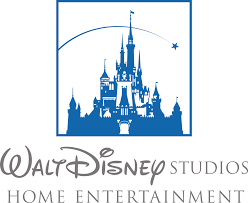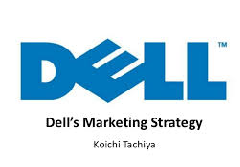Developing Market Supply Chain Strategies Order Instructions: The writer must also use the template I had initially send to you guys about 5 weeks ago to use for all my papers.

It is critical that the writer follow all the steps on that template most importantly how the headings are structured including an abstract and the title page, page numbers, and the reference page all in APA 6th Edition.
Review the arguments made by Christopher and Towill in the article “Developing Market Specific Supply Chain Strategies.” Evaluate their thesis that there are three feasible pipeline designs for supply chains. Apply these ideas, together with any relevant concepts covered in your reading and research this week, in order to explain how one or more of these pipeline designs for supply management would fit with the strategy of global electronics company Hewlett-Packard to optimize materials and product flows. You will need to conduct independent research concerning relevant operational methods and issues at Hewlett-Packard, known for its supply chain success.
Your task is to prepare a 4-page research paper using practitioner and scholarly resources from this week’s resources below and, fully documented and cited in APA format.
Developing Market Supply Chain Strategies Resources
Articles
• Phillips, W., Lamming, R., Bessant, J., & Noke, H. (2006). Discontinuous innovation and supply relationships: Strategic dalliances. R&D Management, 36(4). Retrieved from Business Source Premier database.
This article explores the need for supply relationships to generate, support, and respond to discontinuous innovation.
• Simpson, D. F., & Power, D. J. (2005). Use the supply relationship to develop lean and green suppliers. Supply Chain Management, 10(1). Retrieved from ABI/INFORM Global database.
This doctoral research paper presents a conceptual framework for investigating the relationship between a supplier firm’s level of environmental management and the structure of the customer-supplier manufacturing relationship.
Christopher, M., & Towill, D. R. (2002). Developing market specific supply chain strategies. International Journal of Logistics Management, 13(1). Retrieved from ABI/INFORM Global database.
The authors seek to demonstrate that global supply chain strategies can be developed to achieve higher levels of customer responsiveness at the lower total cost.
Developing Market Supply Chain Strategies Sample Answer
Application and evaluation of Christopher and Towill document titled “Developing market specific supply chain strategies” on Hewlett Packard Inc.
Hewlett-Packard is renowned for its supply chain management strategy. The company has the broadest portfolio of IT products and solutions in the world. About 650 new innovations are added to the company product line every year. The supply network consists of some 700 suppliers, about 32 manufacturing plants, 119 logistic partners and about 88 distribution hubs(Cadden& Downes, 2013). The company serves about 1 billion customers spread out in about 178 countries both directly and indirectly. One of the major highlights of the company’s supply chain is operational effectives and efficiency. The company is relentless in its efforts to improve the supply cost structure, drive standardization and continuously improve customer satisfaction. Demand characteristics as identified by Christopher and Towill in their document titled “Developing market specific supply chain strategies” is one of the factors that has been used by the company to design its supply chain strategy(Martin & Towill, 2002). It has been argued that instead of firms competing, it is supply chains that actually compete. The corporation competes with a large number of companies that produce products targeting the same customer. The company’s focus on relentless improvement of the supply chain cost structure is informed by the fluctuation in demand. The company must cut costs to attract and retain valuable customers. The products that the company produces have direct competitors (Storer & Hyland, 2011). In order to attract and retain reasonable customer numbers, the company’s supply chain strategy is aimed at cutting costs. The company also relies on supply chain design to deliver superior customer satisfaction levels. It can, therefore, be seen that demand characteristics have been used to design supply chain strategies at Hewlett Packard(Cadden& Downes, 2013).
The next factor that was identified by Christopher and Towill is product characteristics. Hewlett- Packard ensures that it delivers high-quality products to its client’s number over 1 billion globally. The company uses lean management in its production process. Lean management ensures that any wastage that is in the system is eliminated and only value-adding activities are retained in the production process. Fast changing customer needs, advancement in technology and changing market features are shortening product life-cycle (Pero & Lamberti, 2013). The company is said to be introducing about 650 new innovations each year. These are aimed at boosting the product line that the company offers to the market. Due to the fast nature of product changes the company has a supply chain management strategy that enhances that feature. The speed at which the company reacts to demand changes influences the supply chain design. The ability of the pipeline to meet customer needs is very important to the company(Cadden& Downes, 2013). The company ensures that it uses its pipeline to get products to the market when customers need them. The company recognizes that the speed at which its supply chain is able to move its products through the pipeline and into the hands of the customer determine its success. The company must be able to do this faster than the competitors and in a manner that the customer appreciates to ensure the customer remain loyal to the company. One of the company’s strengths is providing products that are customized to meet customer tastes and preferences. The quick response management strategy that the company has ensures that the company is able to make demand information driven decision at the last moment(Martin & Towill, 2002). The company is able to offer products at the least cost possible within acceptable timelines. The company supply chain management strategy enables it to get information on product customization from a client and channels it effectively to manufacturers. The information is processed and feedback given to the customer in a timely manner. Hewlett-Packard Company’s supply chain strategy is driven by innovation. The company invents new methodologies, tools and processes to create efficiencies and enhance performance of not only the supply chain but to meet the design needs of its products and technologies. The company embraces continuous improvement in its supply functions. This enables the company to anticipate and meet changing needs of the customers. The company deals with a wide variety of products and technologies which makes it important for it to tie its supply chain strategy on its products characteristics (Martin & Towill, 2002).
The last factor that identified by Christopher and Towill in their document titled “Developing market specific supply chain strategies” is replenishment lead-time. This is one of the factors that have been used by the company to design its supply chain strategy. Replenishment lead time has a lot to do with the company’s ability to meet supply needs within the stipulated time frames. It is very costly for the company to hold inventory and as such must be able to get what it needs when it needs it to meet customer needs. Hewlett-Packard recognizes the importance of speed in its supply chain. Replenishment lead-time delivers competitive advantage and differentiation to Hewlett-Packard (Jüttner, Martin & Godsell, 2010). The company’s supply chain strategy focuses on collaborative business partnerships with its suppliers. The company has built strong business partnerships with its suppliers globally to ensure that it is able to deliver products to customers faster and conveniently. The company ensures that there is a seamless integration of data and processes to serve customers effectively and efficiently. The company ensures that this information is relayed throughout the value chain clearly and speedily to ensure customers get their products on time without any delays. The company ensures that it aligns its business goals with those of suppliers. Alignment of business goals enables suppliers and the company to pursue a similar vision which ensures customers gets speedy reaction to issues that they raise(Cadden& Downes, 2013). The supply chain strategy that Hewlett-Packard has implemented ensures that the company is able to provide a wide variety of products and services in the exact quantity, quality and variety. The company is able to deliver these products in the right time, right place and right price to get a competitive advantage (Noke & Hughes, 2010). Consumers nowadays are tech savvy and do place their orders in real-time. The company is able to process real-time customer request fast and provide the right product at the right time and according to specifications. The market that the company operates in is highly volatile, demanding and competitive. The supply chain strategy has built a pipeline that is maximizes product offering, minimizes lead times, reduces costs and ensures no stock outs are recorded (Cadden& Downes, 2013).
In conclusion, Hewlett-Packard Inc. has applied demand and product characteristics and replenishment lead-time to build a supply chain strategy that has given it competitive advantage in the market. The company is able to serve its customers better than the competitors, maintain its costs low and also replenish its stocks on time to ensure that no orders are lost due to stock outs. Indeed Hewlett-Packard has been able to demonstrate that companies do not compete but supply chains do compete. The company with the most innovative, efficient and effective supply chain generates competitive advantage and records superior performance.
Developing Market Supply Chain Strategies References
Cadden, T., & Downes, S. J. (2013). Developing a business process for product
development. Business Process Management Journal, 19(4), 715-736. doi:http://dx.doi.org/10.1108/BPMJ-Jan-2012-0006
Jüttner, U., Martin, C., & Godsell, J. (2010). A strategic framework for integrating marketing
and supply chain strategies.International Journal of Logistics Management, 21(1), 104-126. doi:http://dx.doi.org/10.1108/09574091011042205
Martin, C., & Towill, D. R. (2002). Developing market specific supply chain
strategies. International Journal of Logistics Management, 13(1), 1-14. Retrieved from http://search.proquest.com/docview/235943451?accountid=45049
Noke, H., & Hughes, M. (2010). Climbing the value chain. International Journal of Operations
& Production Management, 30(2), 132-154. doi:http://dx.doi.org/10.1108/01443571011018680
Pero, M., & Lamberti, L. (2013). The supply chain management-marketing interface in product
development. Business Process Management Journal, 19(2), 217-244. doi:http://dx.doi.org/10.1108/14637151311308295
Storer, M., & Hyland, P. (2011). Utilizing industry-led innovation capacity to enhance supply
chain performance: An empirical study. Modern Applied Science, 5(6), 55-81. Retrieved from http://search.proquest.com/docview/913518117?accountid=45049












